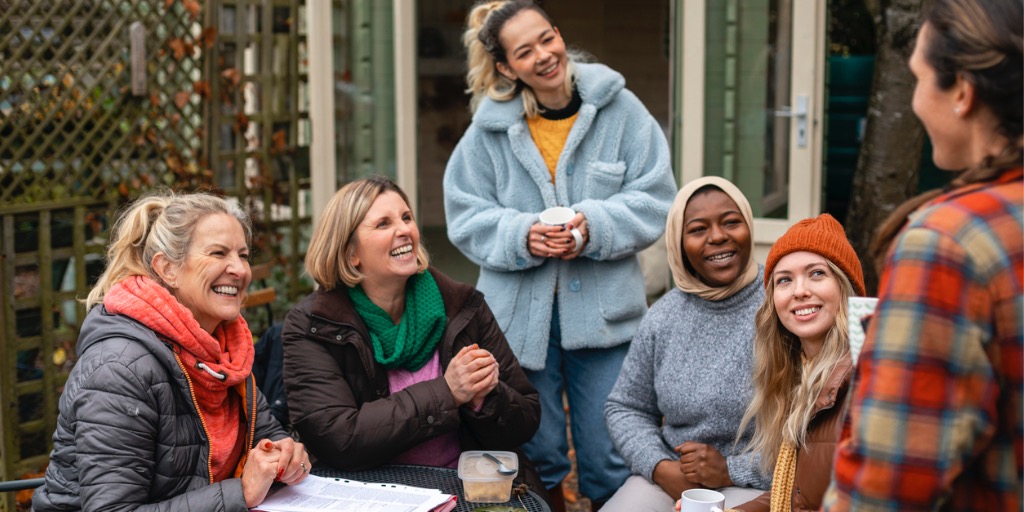Story
Building the Future: How To Fill the Housing Gap with Innovative Technologies and …
October 25, 2022
Story
April 26, 2023

Emilie Lesage
Housing Program
Exploring the connection between affordable housing, public space and helping people feel like they belong.
Feeling like you belong is one of our most basic human needs. Knowing you have a place where you’re physically and psychologically safe, with people who accept you for who you are, is vital to wellbeing. For many Canadians, though – especially those from lower income brackets – that sense of belonging can be hard to achieve. Being unable to afford a permanent place to live, facing the stigma of homelessness, or living in socially assisted housing leaves people feeling isolated from the larger community.
There are initiatives out there that are helping people overcome isolation and social exclusion. We interviewed two affordable housing experts on Evergreen’s Housing Supply Challenge Support Program Advisory Committee and asked them to share their insights on how a thoughtful intersection of affordable housing and public space can foster belonging in our communities.
Jeff Neven is CEO of Indwell, a unique, affordable housing non-profit with over 1,000 affordable units (and more than 1,200 low-income residents) in the west GTA. Giacomo Valzania is a Ph.D candidate focused on housing, common space and suburban transformation. He works with Groupe CDH, which develops social and community housing in Quebec.
“Indwell’s mission is to help people find health, wellness and belonging, so this is something I think about a lot,” says Nevin. “Belonging is a relationship that extends beyond the individual to neighbours and community. It’s about security of place, but also security in relationships with people who value what you can contribute.”
Indwell communities are designed to foster belonging
The non-profit’s goal is to offer dignity and hope, health and wellness, love and belonging. They keep all those things in mind in the thoughtful approach they take in the design of their housing projects:
Stereotypes lead people to expect these buildings to be wrecked or full of dangerous people, and Nevin believes that engaging with the local community is key to changing that narrative.
“We work hard to disrupt people’s negative belief systems about the residents of affordable housing,” says Nevin. “Living and working in close proximity to one another rewrites these stories. When non-residents come into the community spaces, they’re surprised. I’ve gotten comments like ‘but it’s so nice’ or ‘this doesn’t look like public housing.’”
Ultimately, being valued and accepted by each other is what builds belonging. And without shared, accessible spaces that allow for meaningful interaction between different socio-economic groups, everyone stays in their silos. Common spaces are where people find common ground.
People need housing security before they can find belonging
“Belonging hinges on permanence,” says Valzania. “People need the chance to stay somewhere long-term. But the way things are structured now in Canada, affordability is a temporary condition. If developers want to access government funding, they must include a certain number of affordable units. And that’s great, but after 15 years, those units can be put on the market – and they aren’t affordable anymore. Belonging and housing security are one and the same. If you’re forced to move, that erases belonging.”
What inclusive public spaces can look like
Public spaces can fight isolation and build belonging – if they’re deliberately designed and operated that way.
“Design can contribute or detract from a sense of belonging in public space,” says Valzania. “Hostile design prevents behaviours like lying down on a bench, sheltering from sun or rain – or just sitting down and having a rest. These spaces aren’t being used to their full potential, and they’re excluding people who could benefit from them without causing any harm. Welcoming design, on the other hand, provides opportunities for use and interaction.”
He offers a simple example of an inclusive space: a large public platform that can be a stage for a concert, a place to sunbathe, a spot for kids to run and play or a place for friends to play chess.
Valzania also invites us to rethink the whole idea of public vs. private space. We tend to see “public” as something that’s owned by the city or the government – places like parks and town squares. But there are many ostensibly private places that have common uses, like shopping malls.
“In malls you see seniors walking the halls for exercise, or young people meeting up in food courts for social connection,” he says. “An important next step is understanding how these privately-owned public spaces can be protected and used to help create a sense of belonging.”
The same thing applies to the green spaces around condos, apartment buildings and businesses. Often, these areas are only accessible to the people who live or work there, and often go unused. Valzania wants to find ways to make them more available so visitors can rest and enjoy nature in a respectful way that doesn’t diminish their meaning or value – an important consideration in our rapidly densifying cities.
Ultimately, both Valzania and Niven agree on this key fact: accessible, usable, non-commodified public spaces are necessary to build belonging in our communities. Without them, we all live in silos of isolation, defining and misunderstanding each other from afar.
This is a transformative year for Evergreen as we continue our work on housing innovation with Stage 2 of Round 4 and placekeeping projects across Canada. Discover more and subscribe to our newsletter.